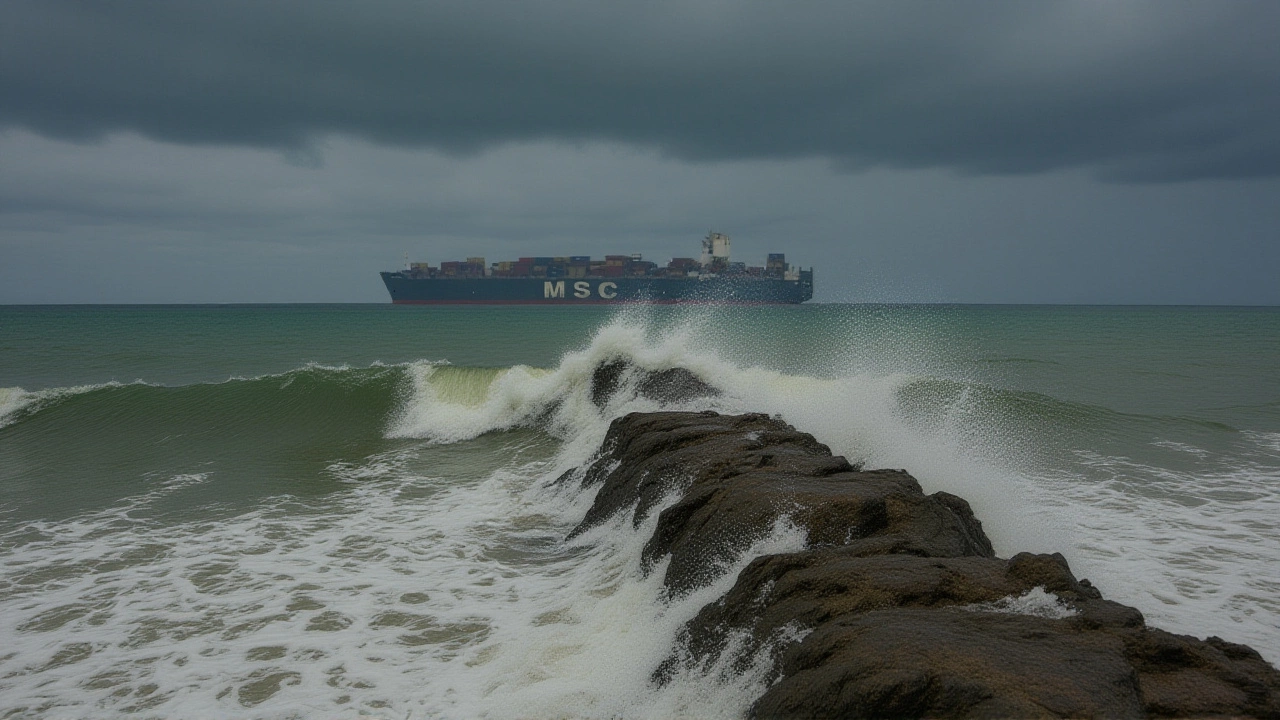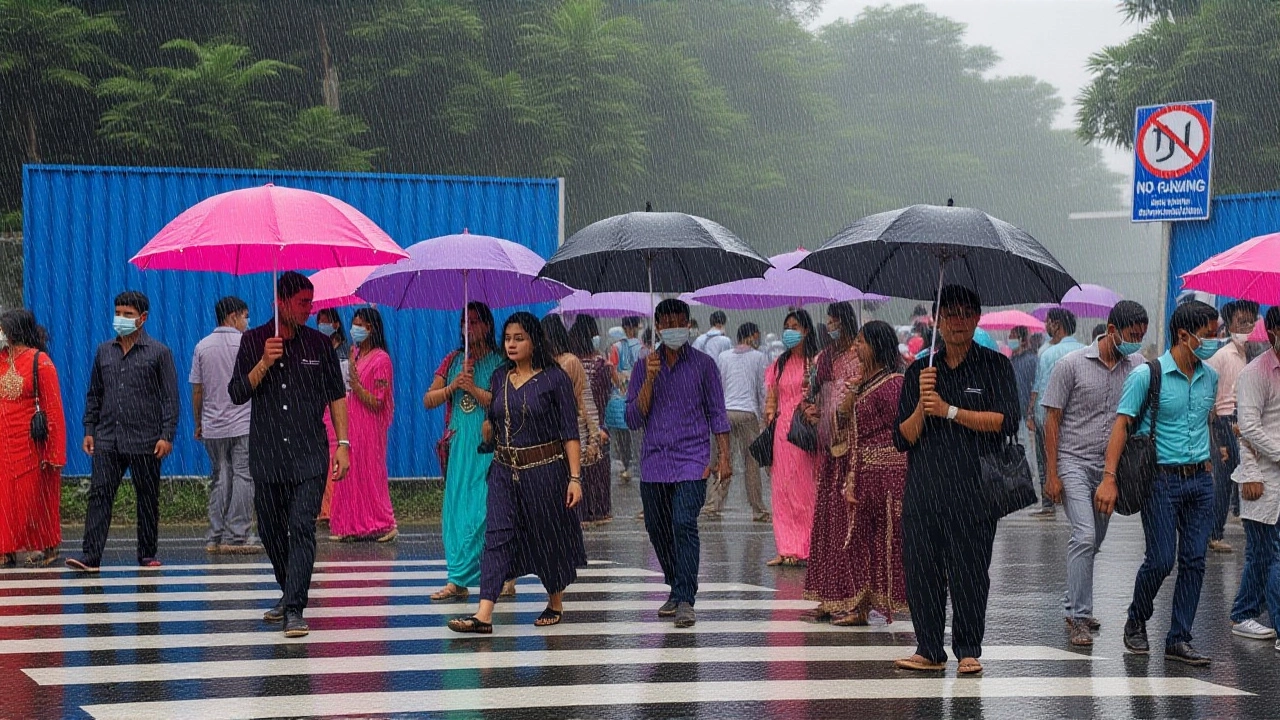
A low-pressure system is churning over the Southeast Bay of Bengal, and by late November 24, 2025, it could become Cyclone Senyar — the second major storm of the post-monsoon season. The India Meteorological Department (IMD) warns that the system, currently hovering about 1,000 kilometers offshore, is primed for rapid intensification. By November 27, wind speeds could hit 100 kilometers per hour, with heavy rains lashing the coasts of Tamil Nadu, Andhra Pradesh, and potentially Odisha. The real danger window? November 27 to 29. Fishermen have already been ordered to stay ashore. Farmers are watching their paddy fields with dread. And in government bunkers from Chennai to Bhubaneswar, emergency teams are running drills — even as experts clash over whether Odisha will truly be hit.
When the Bay Gets Angry
The Bay of Bengal in late November isn’t supposed to be this active. But climate patterns are shifting. Sea surface temperatures are running 2.5°C above average. Wind shear — the enemy of cyclones — is unusually weak. That’s why the IMD says this system could go from low-pressure area to cyclonic storm in under 72 hours. The Andaman and Nicobar Islands are already getting drenched: 105 to 204 millimeters of rain expected by November 25. That’s nearly eight inches in a day. Coastal roads are flooding. Power lines are swaying. And the real question isn’t whether it’ll rain — it’s where the eye will land.Odisha’s Divide: Preparedness vs. Probability
Suresh Pujari, Odisha’s Revenue and Disaster Management Minister, says the state is ready. “We’ve pre-positioned relief teams, cleared evacuation routes, and activated 47 district control rooms,” he told reporters on November 22. “We don’t wait for certainty. We act on risk.” His team has stocked 3.2 million liters of drinking water, 1.8 million ready-to-eat meals, and 210 rescue boats. Emergency shelters in Ganjam, Puri, and Kendrapara are being inspected. But here’s the twist: Dr. Sarat Sahu, a veteran climatologist with the Indian Institute of Tropical Meteorology, says Odisha won’t be hit — not this time. “Since 1970, there’s not a single recorded cyclone making landfall in Odisha after November 15,” he said. “Systems forming this late in the season almost always curve westward toward Tamil Nadu or south Andhra Pradesh. They lose steam before reaching Odisha’s coast.” He points to 2021’s Cyclone Gulab and 2023’s Biparjoy — both formed in late November, both veered south. “This model? It’s inconsistent. We’ve seen this pattern before. The system weakens over the Bay, then dissolves into rain showers — not a storm.”
The Real Victims: Farmers and Fishers
While officials debate, the people on the ground are already paying the price. In Nagapattinam, Tamil Nadu, farmer Ramesh Kumar watched his last batch of paddy turn soggy under sudden downpours last week. “We were supposed to harvest by November 25,” he said, mud on his boots. “Now? We’re praying the cyclone misses us.” Across the coast, fishermen have lost over 300 days of work since October. The government has distributed ₹12,000 in relief per boat owner — but that won’t cover diesel, nets, or lost income. The Andaman and Nicobar Islands are bracing for the worst. Schools closed. Evacuation orders issued for low-lying islands like Havelock and Neil. The Indian Navy has moved two offshore patrol vessels closer to Port Blair. “We’re not taking chances,” said a naval spokesperson. “This could be the strongest system we’ve seen here since 2018.”Why This Matters Beyond the Coast
This isn’t just about rain and wind. It’s about food security. The coastal districts of Tamil Nadu and Andhra Pradesh produce nearly 18% of India’s rice. A delayed harvest means higher prices nationwide. It’s about infrastructure. The National Highway 16 — the lifeline connecting Chennai to Kolkata — could be flooded for days. It’s about trust. When experts disagree, the public doesn’t know who to believe. And in emergencies, confusion kills.
What’s Next?
The IMD says it won’t issue reliable forecasts until November 24 — when the system becomes a depression. Until then, everyone’s guessing. The European Centre for Medium-Range Weather Forecasts (ECMWF) model suggests a landfall near Kakinada. The U.S. GFS model points to Nagapattinam. The Indian model, IITM-CP, says it might just fizzle out. That’s the frustrating reality of tropical meteorology: the further out you look, the more the lines blur. But one thing’s certain: by November 29, someone will be cleaning up. And whoever’s left standing will be asking — again — why we didn’t prepare better.Frequently Asked Questions
How likely is it that Cyclone Senyar will make landfall in Tamil Nadu?
Current models give Tamil Nadu a 65-70% chance of direct impact, especially its southern coastal districts like Nagapattinam and Cuddalore. The region’s geography — shallow continental shelf, warm waters — makes it a magnet for cyclones forming in the southeast Bay of Bengal. The IMD’s latest ensemble runs show the storm’s center likely passing within 50 kilometers of the coast, bringing storm surges of 2-3 meters.
Why is Odisha’s government preparing if experts say it won’t be hit?
Odisha has learned from tragedy. After Cyclone Phailin in 2013 killed over 100 people, the state built one of India’s most advanced disaster response systems. Even a 10% chance of landfall triggers full preparedness. As Minister Pujari said, “We don’t gamble with lives.” The state’s strategy is precautionary — not predictive. And historically, even weak systems have caused deadly flooding when they stall.
What makes Cyclone Senyar different from last month’s Montha?
Cyclone Montha formed farther north and hit Andhra Pradesh with 140 km/h winds on October 28. Senyar is forming closer to the equator, meaning it’s likely to track west-northwest instead of north-northwest. That shifts the threat southward. Senyar may also intensify faster due to warmer waters — sea temperatures are 1.8°C higher than the 30-year average in its formation zone.
Could this cyclone affect Delhi or north India?
Unlikely. By the time any remnants reach inland, they’ll have weakened significantly. But cold waves are already gripping north India — a separate weather system. The IMD confirms no direct link between Senyar and the chill sweeping through Punjab and Uttar Pradesh. The two are unrelated, though both are symptoms of a changing climate pattern.
When will we know the exact path of Cyclone Senyar?
The IMD will issue its first definitive forecast on November 24, 2025, once the system becomes a depression. Until then, models vary widely. The most accurate predictions usually emerge 48 hours before landfall. By November 26, you’ll know whether it’s a direct hit, a near-miss, or a dud. Until then, treat all alerts as real — because in cyclones, uncertainty is the only certainty.
 Entertainment and Film Industry
Entertainment and Film Industry